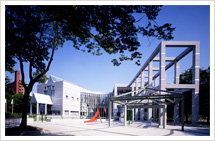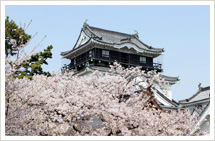
Aichi Arts Center
The large complex houses the Aichi Prefectural Museum of Art, a theater which can stage a full-scale opera, a mini theater, and a concert hall. It is one of Japan’s leading large-scale public cultural facilities. Opened in 1992.
(1-13-2 Higashisakura, Higashi-ku, Nagoya)

Nagoya City Art Museum
An art museum located within the rich greenery of Shirakawa Park in the heart of Nagoya city. The building is famous as being a representative work of the architect Mr. Kisho Kurokawa. Opened in 1988.
(2-17-25 Sakae, Naka-Ku, Nagoya)

Choja-machi District
Located between Sakae, the downtown area of Nagoya, and Nagoya station, Choja-machi area is one of the busiest business districts. Nevertheless, the area has a distinct atmosphere that differs from the usual commotion of a city center. The district prospered as a castle town during the Edo period, and since the war, it has developed into one of the three great textile wholesale district in Japan, along with Tokyo’s Yokoyama-cho (Nihonbashi) and Osaka’s Dobuike Suji (Semba).
( 2 Nishiki Naka-Ku Nagoya)

Okazaki City
Located in the center of Aichi Prefecture, Okazaki city is the central city of the western Mikawa region with a population of approximately 380,000.
The city is the birthplace of Ieyasu Tokugawa, founder of the Edo Shogunate and has prospered since as a key junction for transportation throughout Eastern and Western Japan.
The Oto River, which runs through the city center, and Okazaki castle on its riverfront are representative sceneries of Okazaki city, a city infused with history and culture.




